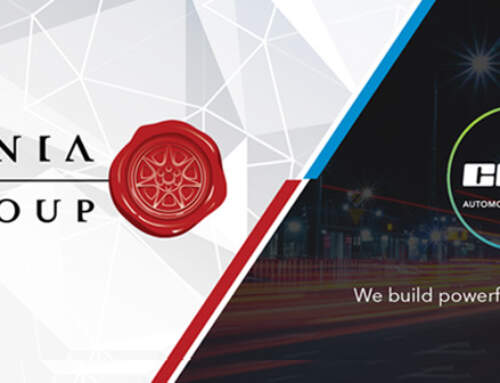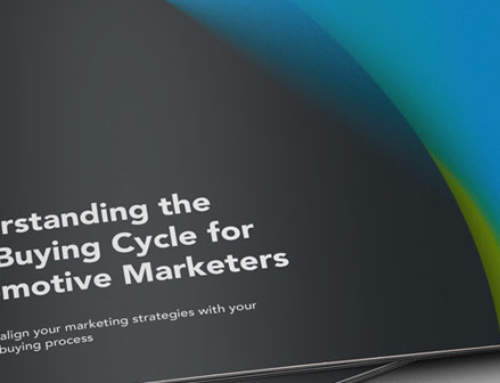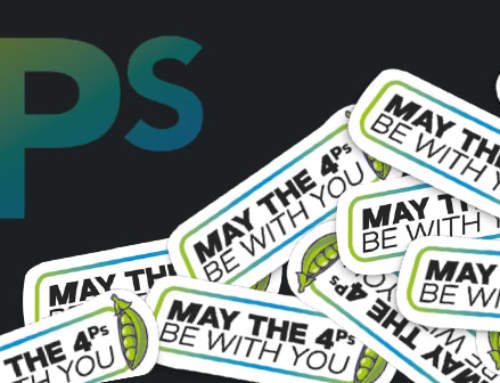International Automotive Branding
How to develop your automotive brand for global markets. An interview with GlobalAutoIndustry.com
Discover the key considerations around International Automotive Branding. In this 13 minute interview with GlobalAutoIndustry.com our CEO and automotive branding expert, Chris Bowers, discusses his experience, advice and guidance on brand development and maintaining control of your automotive brand when working with distributors, dealer networks and manufacturing partners overseas.
In the 13-minute Audio Interview, Chris Bowers discusses and answers these questions:
• What exactly is a brand and what goes in to developing one?
• In an increasingly global automotive industry, what should a company consider when developing their brand for an international market?
• Having established some key factors around developing an international brand, how can a company protect and control its brand when used in overseas territories?
• What are the main steps in developing a brand for global markets?
Following here is the transcription from the interview…
International Automotive Branding
Q) What exactly is a brand and what goes in to developing one?
A) There’s a lot of talk about brands and branding and every company seems to want to be one. However, there seems to be some confusion as to what makes a brand and how they are created, with some believing it’s little more than creating a new logo.
Simply put, your brand is your promise to your customers. It’s all about how the external world sees your company. It tells them what they can expect from your products and services. Your brand gives an immediate ‘feel’ for the level of quality, reliability, expense, style, expertise and service your customers receive from your products. When developing your brand you are trying to shape the way the market sees your company and how it feels about it.
Let me give you some of my basic thinking about brands:
- Brands exist for only one reason – to create competitive advantage for your product or service in the market.
- To be effective, a brand should develop and sustain a position that is different or better than its competition.
- Competing in automotive markets on a platform of brand preference is more profitable and sustainable than competing on price alone.
- If you’re not a brand, you’re a commodity and the only winner is the lowest cost producer.
So in reality, brands are created for reasons far more fundamental to business success than just creating a new logo. A distinctive and effective brand strategy will give you a major edge in increasingly competitive and global automotive markets. In short, developing your brand is crucial to your business operations.
If we briefly look at the main building blocks of what makes a brand we can start to understand the process of brand development better. These include:
Brand Positioning – Think of positioning as your Unique Selling Point or USP. You can’t be all things to all people. So your brand positioning defines where you sit in the market compared to the competition
Does your brand represent high cost, high quality or low cost, high value? Brand positioning defines the basis of the markets’ perception of your company and you should align your positioning with your target market.
Brand Identity is the look and feel of your brand. This is what makes you stand out in a crowded market place. It includes your logo, the colours you use, the tone of voice you use in communications, and all the identifiable elements that are associated with your company or product.
Brand Promise – this is what your brand stands for, your key messages and what you say about your products or services. Importantly, it’s about how these messages relate to and align you with your ideal customers.
Q) In an increasingly global automotive industry, what should a company consider when developing their brand for an international market?
A) Yes, the auto industry has definitely gone global. It is important for any automotive company to look at the implications of their brand when exploring international markets.
Market research is key to understanding many issues around introducing your brand in to another country. Some things to consider include for your international automotive branding strategy:
- Brand Positioning
Just because your brand positioning works for your home country doesn’t mean it will work in another. Make sure you really understand the market you’re entering. Research the existing competition and why their customers buy from them.
The competition will probably be more established and more recognised or they could offer cheaper alternatives to yours, use different technologies or fulfil a different requirement. Work out how and where your brand fits in.
You may need to develop different positioning for different countries, or if you want to maintain a consistent positioning across multiple countries, you may have to be prepared for the extra work needed to establish and maintain that position.
- Is there a need or demand for your products in another country? Sometimes markets are controlled by factors such as price, availability of parts & service, service levels, technology and so on. Can your brand live up to the market expectation from that country?
If your product in new to another country, is there enough demand there to create a viable market. On the downside, you may need to invest heavily in educating the market and communicating your product. On the plus side, if your product is the first – it can be synonymous with your brand.
- Consumer Behaviour
Just because consumers of companies have certain buying habits or preferences in one culture doesn’t mean it will be the same everywhere. Make sure you understand your customers’ buying and business preferences and standards.
Even in countries that share the same language you still have to do your research. Simple things such as product names can make a big difference.
To give you an example, take the US and the UK. Both countries speak the same language and the cultures are very close. However, auto products often have different names. In the US, you have brake rotors on a car but in the UK they are called brake discs. If your brand is called Ron’s Rotors, this doesn’t mean the same thing if you’re looking to start selling your brake products in the UK.
- Brand Names and Identity
You’ll need to check carefully that your brand name or identity is ok to use in another country? Is your brand name already in use or is there something similar that could be easily confused with it?
If a brand name or statement is translated, does it work or make sense in another language? There are some great examples of brand names that have translated in to some very unfortunate meanings – you can find some amusing examples with a quick search online!
Check out international or local trademarks. You will need to do some research and get your legal team to investigate the use of your brand for each country you wish to operate in.
Even colours and symbols can have different significance for different countries. For example, in the west, blue is often used for corporate businesses, representing trust and stability while in some Asian countries, red is more corporate and widely used for business.
Certain symbols, such as animals have different cultural significance in different countries, so make sure any imagery you use doesn’t have different connotations from what you expect.
The key is preparation and research, making sure you have the full picture of your markets from consumer behaviour, to market demand and cultural significance.
Q) Having established some key factors around international automotive branding, how can a company protect and control its brand when used in overseas territories?
A) When you introduce your brand in to another country you will need to make sure it is protected. Work with your legal team to file the appropriate trademarks and patent protections, if applicable. You may need to do this in multiple countries – at least in all the countries you are planning to operate in.
Licensing
If you decide to license your product or service name to a manufacturer or provider overseas, exercise tight controls to make sure that the provider is reputable and won’t misuse your brand name and will adhere to your quality control standards.
Remember that when you put your brand name on a product or service, you want a consistent experience for the customer, so that every time people buy it, they understand the values of your brand.
Distributor and Dealer Networks
If you work with a distribution, dealer or vendor network, make sure they understand the importance of using your brand correctly and what this means. Again, ensure strict control over the use of your logos, identity, messages – making sure it is consistent with your brand standards. Try to use experienced and reputable distributors who have experience in representing foreign brands. They are more likely to comply with your guidelines and standards for brand use.
Brand Guidelines
To help your partners understand your brand, you should develop Brand Guidelines. This is a sort of ‘rule book’ that outlines the representation of your brand and how it should be used.
It should describe your logo use and how you prefer this to be displayed. It should include the colours, fonts, key messages, tone of voice and style of imagery that makes your brand identifiable. It may also provide examples of layouts, advertising and marketing materials to ensure consistency across all touch points of your business.
Develop your Brand Guidelines and Make sure you provide all your overseas dealers and distributors with this document and that they understand how important it is to operate by it when representing your brand. If necessary, have the document translated to make it easier for them to understand and so there are no misinterpretations of your rules.
Dealers & Distributors
To maintain even better control, you can supply your partners with marketing and promotional collateral that is already branded and allows them to personalise and add their own contact details.
Many distributors like this approach as it supports their efforts to sell your products and services and saves them the effort of having to allocate resources to create these elements themselves. By making it easier for your partners to sell your brand, they will be more likely to push your brand to their customers.
Internal Stakeholders and Staff
Ensure your employees all understand your brand. As much as the external market needs to have a vision of what your brand represents, your internal stakeholders should also be aware of the brand and how to communicate its values.
Q) What are the main steps in developing a brand for global markets?
A) In simplistic terms, the process of International Automotive Branding should follow a simple 4-step process:
Identify the Opportunity– begin with a rigorous analysis of your overseas market. Thoroughly understand the market place, the culture, the competition, your customers’ needs and any legal ramifications around the use of your brand and if changes may be required.
Define the Brand– Where do you fit in the market and what does your brand represent? How do you define and describe the Vision, Values, Positioning and identity of the Brand.
A good brand must be:
- Relevant
- Credible
- Distinctive
- Defined
- Competitive
- Consistent
Articulate the Brand– demonstrate creatively how the brand is brought to life. This involves your brand identity (name, logo, colours, fonts and so on). Make sure key messages resonate with your market and make sense in all the countries you operate in.
Communicate the Brand– how do we communicate the brand our customers, stakeholders and employees. Make sure your brand is consistently integrated across all touch-points with your customers. This can include everything from product packaging to website, advertising, brochures and literature, company clothing, retail outlets, signage – any point where your company comes in to contact with your customers.
If you don’t effectively communicate your brand, the external world will do it for you – probably inaccurately or in a way you don’t control. It’s important to remember, your brand is not always what you think it is – it’s also what your customers think it is. It is up to you to control how the market perceives your brand – through your brand strategy and development.
Last of all…
Remember to be true to your brand. Don’t set it up to be something you can’t achieve or don’t believe in. If you can’t back up your brand promise and positioning, customers won’t return and your reputation can suffer.
Over all, be consistent with your brand and how it is applied. Define your key messages, your identity, tone of voice and stay consistent with it. Enforce your brand across all your communications and if you have dealers and distributors or agents working for you in other countries, make sure they understand the importance of using it correctly. Consistency builds trust, improves brand recognition and ultimately will help steer your brand to greater success overseas.
If you’re considering expanding your automotive company into global markets, contact CMB for a no obligations chat to discover the opportunities for developing your international automotive branding.
CMB is a specialist branding consultancy for the global automotive industry. See us mentioned on DesignRush Top Branding Agencies











